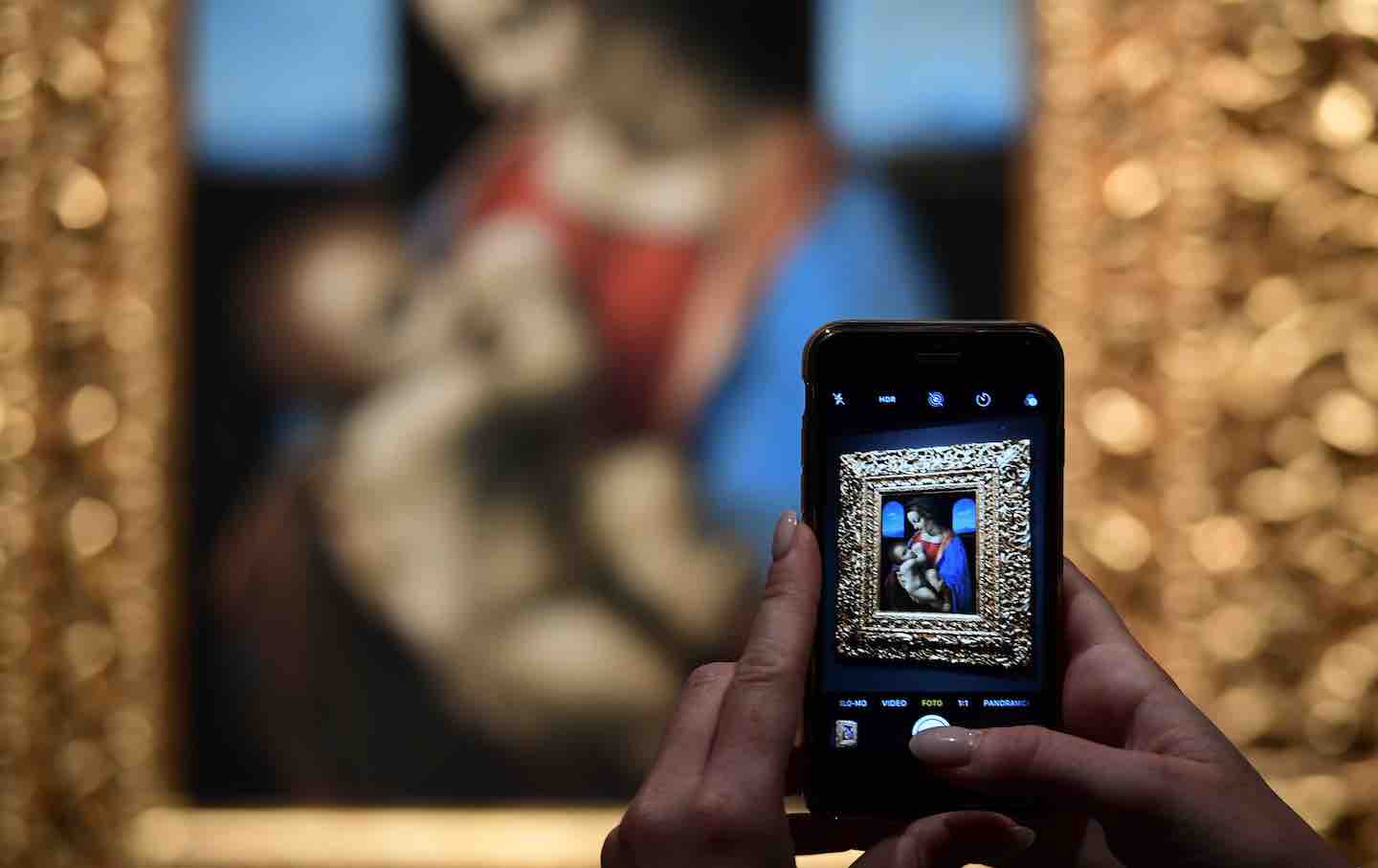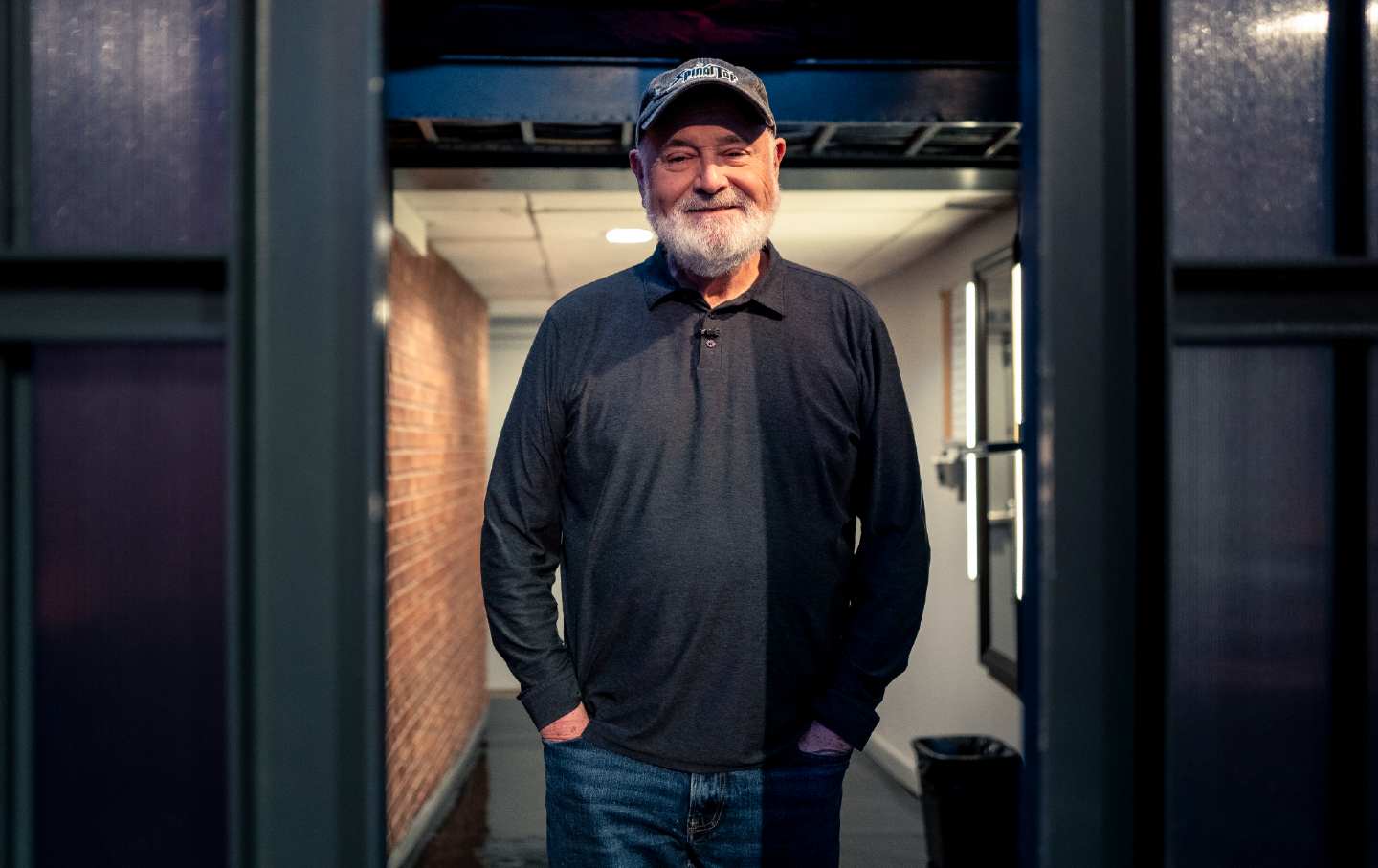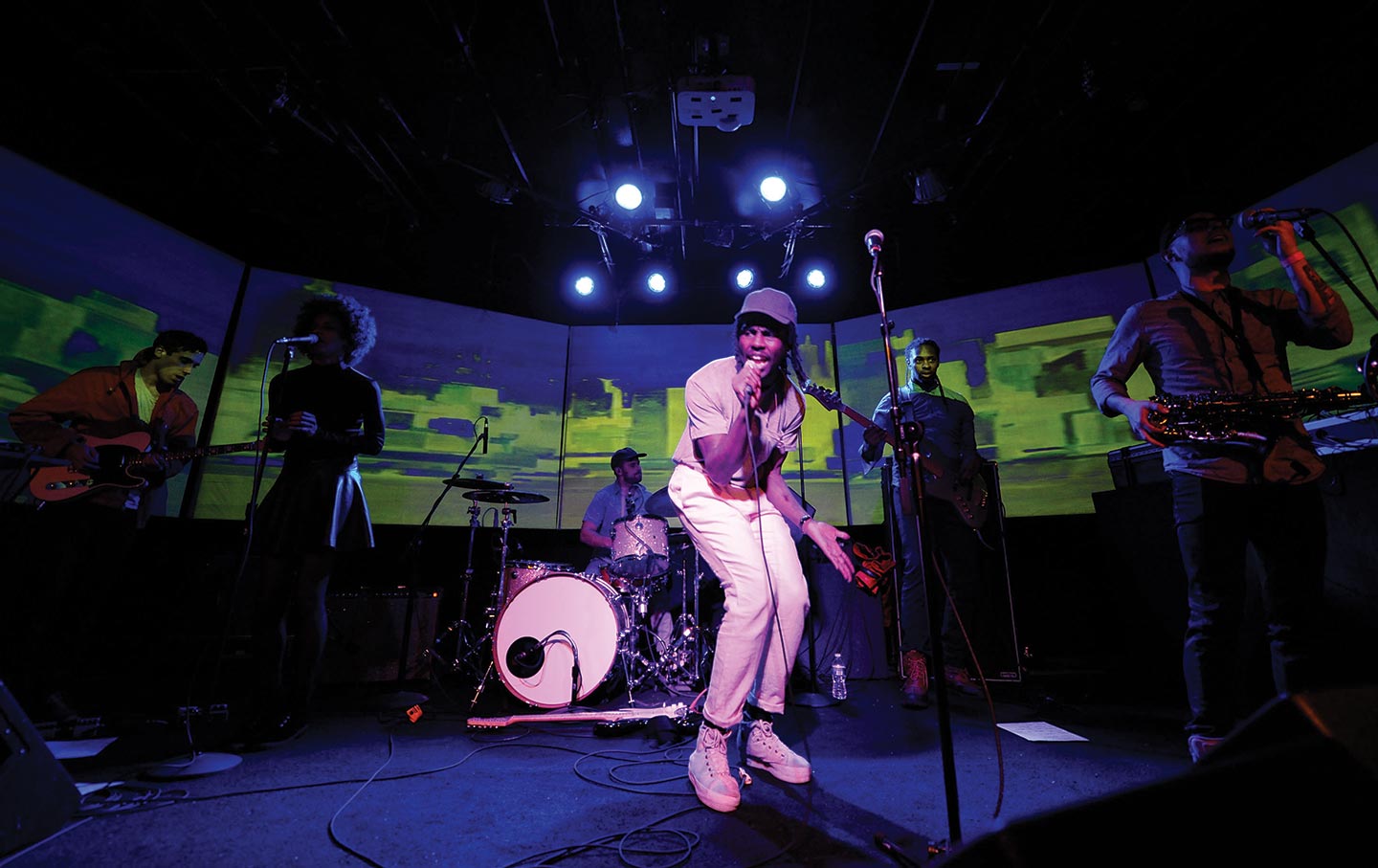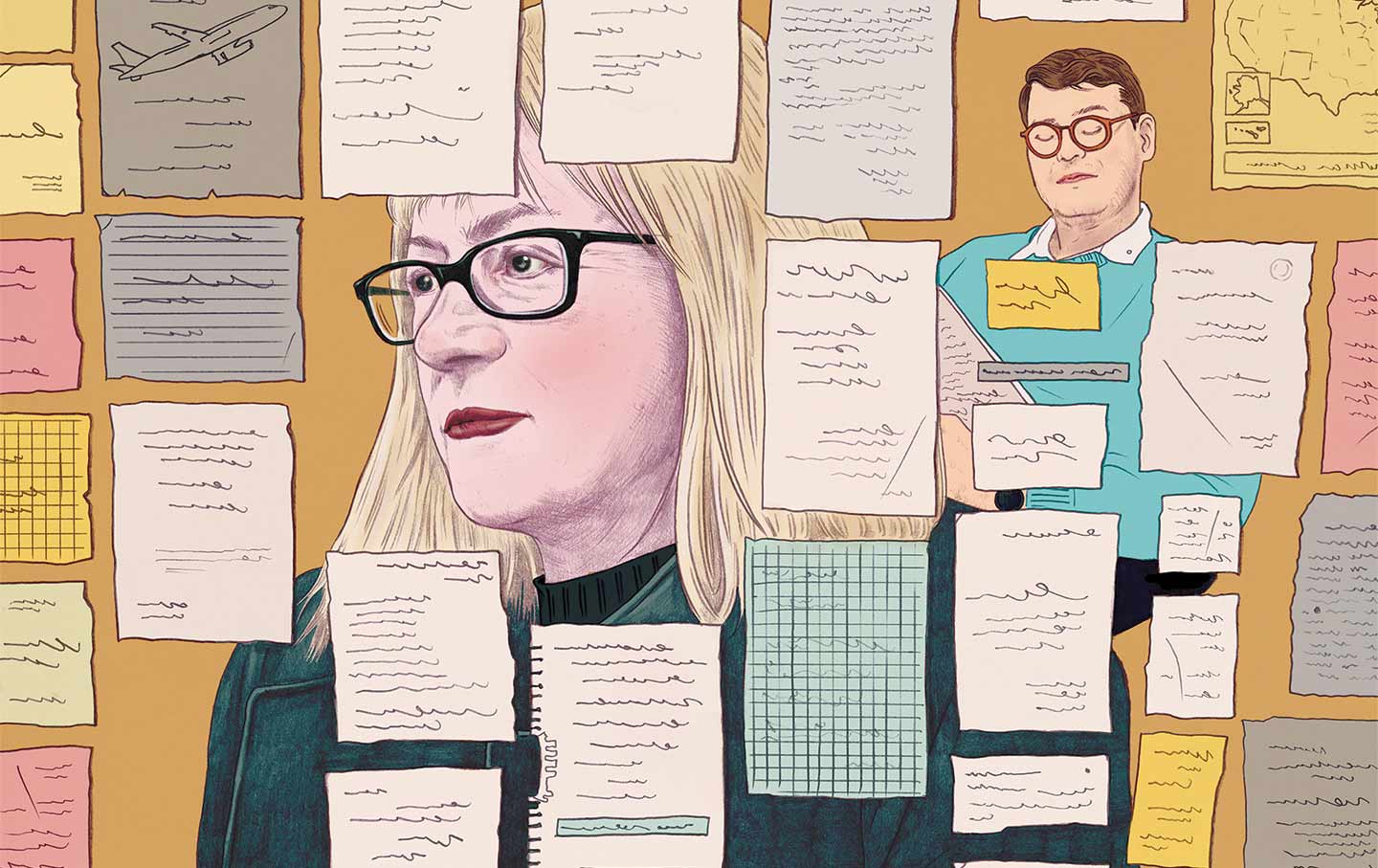Looking at Art Will Never Be the Same Again
A conversation with the art historian Claire Bishop about technology’s influence on museums and galleries, and her recent book Disordered Attention.

A visitor takes a photo with her smartphone of Italian Renaissance painter Leonardo da Vinci’s “Madonna Litta”, at the Poldi Pezzoli museum in Milan, 2019.
(Photo by MIGUEL MEDINA/AFP via Getty Images)
Attention is often defined by what it excludes: To focus on one thing means ignoring another. Attention can also be a state more than a deliberate action, a “relaxed distribution of focus,” as Claire Bishop, a professor of art history at CUNY Graduate Center, writes in Disordered Attention. Her book tracks how our attention has been reorganized by digital technology and how artists, in particular, have adjusted their work in response. Today, most people hold phones in their hands when they visit a gallery; they take photos, text those photos to friends, look up the artists. But even if the tech that is molding our attention might be new, the sociable nature of attention originated in the theaters and museums of the 18th and 19th centuries.
Then, as now, artists steered and occasionally played with our attention. In the 18th century, the Austrian composer Joseph Haydn inserted silences into his otherwise orderly music to thwart the expectations of his listeners and jolt them into attention. The white-walled contemporary museum follows a similar logic. Surrounding work with blankness allows us to concentrate on the art itself. Other artists are treating contemporary forms of information overload as an opportunity. At the 2019 Venice Biennale, a climate-change-themed opera, Sun & Sea, ran for eight straight hours. A cast of sunbathers read and built sandcastles on a beach built inside a gallery as the audience filtered in and out of the mezzanine, chatting and snapping photos. This setup, along with the opera’s duration, encouraged a diffused attention that existed both here (the gallery) and there (online). “We have come to document as we look,” Bishop writes. At first, she was irritated by the performance. She couldn’t tell who was singing, and peripheral noise hummed around her. “And then I came to realize that was not the point of the piece,” she said. “I really like these durational works for how they encourage us to stay and watch repetitions, iterations, and see how things change.”
The Nation recently spoke with Bishop about live performance, artistic responses to the attention economy, and how museum architecture produced a new way of looking. This interview has been edited for length and clarity.
—Francesca Billington
Francesca Billington: You write that during a museum visit, you’ll switch between the art and your phone. You might scan a QR code to read about the show, you’ll reply to texts, you’ll photograph the labels. When did this type of behavior start? To what extent is it driven by our own habits of attention, and to what extent is it encouraged by the museums themselves?
Claire Bishop: I was trying to figure out if it was just me, or if there had been a broader cultural shift in relation to attention. I used to be so absorbed by multi-part installations—now I often just feel overwhelmed. So part of the argument is that our reading habits have changed as a result of smartphones and the Internet. We’ve gotten used to intermittent and competing pulls on our attention. I would say this hit the current pitch around 2016; this is when you find an explosion of indignation about phones in theaters. Museums took the opposite path and decided to harness these multiple pulls on our attention.
The book is primarily an argument against people (and there are a lot in academia!) who still believe in fully focused attention—the idea that you can and should stand and be mesmerized by a work of art for a long time without any technological intermediaries. I’m not against this—I stood gaping in front of Manet’s Olympia at the Met recently—but it’s not a realistic account of how people look at art anymore.
FB: What’s the link between the architecture of these places (museums, theaters) and how we’ve learned to engage certain forms of art?
CB: You can see how certain architectures for looking were created in the 19th century to produce what gets called “attention”—museums changing their hanging practices, theaters introducing darkness and changing the seating arrangements. The modern white-cube gallery, with a single line of works on the wall, is all about producing focused attention, a kind of one-to-one relationship between the work and the viewer. And in the theater, it’s about the construction of a dark space for reverential attention to what’s onstage—no talking or chatting at the same time!
FB: It can be easy to despair seeing people spend more time taking pictures than looking at art. But you also show us how new forms of attention aren’t all bad. Also, they’re not entirely new.
CB: The whole idea of fully focused, rapt attention is a modern construction dating from the late 19th century. When you look at pictures of 18th-century museums and theaters—these are drawings and engravings, obviously—you’re struck by the busy crowd talking to each other and largely oblivious to what’s onstage or on the walls. So the kind of socialized attention that we have today in the gallery or museum—taking photos, video clips, texting, and so on—could be seen as a return to premodern sociable spectatorship. Rather than categorizing people’s use of phones in performances as “distraction,” and thus a problem, I see camera phones as a technology that returns us to a premodern form of sociability.
FB: But isn’t it antisocial to block someone’s view of a painting?
CB: Let me clarify: I make that argument about premodern sociability in relation to live performance, not blockbuster exhibitions. I want to situate performance in museums—and people’s use of cell phones—into a longer history of theater spectatorship with opera glasses and horseshoe balcony architecture, all of which are designed to see the audience as much as the performance. In mainstream theater, at least, there’s still an expectation that you won’t be getting out your phone—remember the fiasco over Rihanna texting Jeremy O. Harris in the middle of Slave Play in 2019. But once you move performance into the gallery or museum, behavioral expectations shift, because we’ve been taking photos of works of art for much longer.
Yes, for sure, people taking photos is annoying. I remember going to the Uffizi 20 years ago, and tourists were walking around like zombies taking video footage of the entire experience, not pausing to look at the work. I’m in favor of tolerating hybrid spectatorship, where you look at the work and maybe take a photo as well. Obviously, going too far in either direction is also not great: If you’re only experiencing something through mediation, why are you there? And the “slow looking” movement comes across as pretty conservative—it’s excessively reverential and technophobic. I want to make a case for both being possible, for being with your phone as a way of close looking.
FB: I often think about the impulse I have, when I’m in a museum exhibition, to check my phone even if I don’t want to take a photo. That feels like a downside to our access to technology.
CB: This is a problem, and it’s something I’m constantly fighting. I’m also not drawn to the mindfulness and technology-retreat solution to it.
FB: Why not?
CB: We depend on our phones for work; it’s not just social life. There’s a class assumption about the privilege of being able to switch off. For many people in the gig economy and with precarious, zero-contract hourly jobs, it’s simply not possible to switch off. Anyone with kids also knows this. You never know when there’s going to be a problem with childcare and you’re going to be summoned.
FB: Is there a benefit to letting people film and take photos during, say, a play?
CB: It’s difficult, isn’t it? I’m interested in the phenomenon of “relaxed performance,” which has started to take place over the last 10 years for neurodiverse audiences and audiences with disabilities, and also for kids, who might need to talk or move around. It would be interesting to think of a future in which all performances are relaxed performances.
FB: How have the formal strategies of artists changed in relation to the changes in attention span we are seeing?
CB: It’s happening in various ways, some conscious, some not. I think all artists today anticipate how the exhibition is going to look in a photograph. Then, on the level of a work, there are different responses, some of which I argue are symptoms rather than deliberate attempts to engage critically with attention as a problem. On the one hand, you have the rise of interest in performance, especially durational performance. This is a direct effect of media technology like smartphones. There’s a desire for immediate experience, being together with a group of people. But it’s also paradoxical: The physical immediacy of performance also looks great in photographs. It’s a symptom as well as the cure.
On the other hand, you have artists making installations that contain a lot of dense materials—perhaps in reaction to the one-line concision of social media and headlines. But the effect is to compound the viewer’s sense of information overload. So it cuts both ways: A dense, intellectualized, text-based installation is both a counter to and a symptom of our information environment. The book doesn’t deal with the “experience” economy, the rise of all those immersive installations like the Chagall Experience and the Van Gogh Experience. I’m concerned primarily with work that appears in museums, biennials, and galleries.
There’s also a type of artist who consciously wants to go viral—to get the maximum attention for their gesture, which is often polemical or political. Think of Pussy Riot doing their punk prayer against Putin in the cathedral in Moscow in 2012. It’s a performance designed to be a social media spectacle. A possible problem with this kind of action is that it wants to compete alongside other forms of virality, but by doing so, it generates a mode of attention we could call “peak and wane”—a sudden spike of interest followed by total saturation and rejection. It held our attention intensely, but then we were all over it very fast.
FB: The Internet made it possible for artists to do new types of research and to display that research in new ways. They suddenly had instant access to huge quantities of images and data. What kind of work came out of this?
CB: The gradual availability of masses of articles and archives online has had a few outcomes—most generally, a surge of interest in history. This has been seen in artists’ films and video essays, and lecture-performances and publications, and in a type of installation called “research-based art”—lots of vitrines or shelves containing ephemera, documents, photos, texts, books.
But it isn’t just because of the Internet, of course. There are institutional reasons, too, especially the rise of PhDs (rather than just BFAs or MFAs) in fine art, which are rife in Europe (still not here so much). To an extent, I’m sympathetic to this work. It’s more intellectual and curious than a lot of the market-oriented painting and sculpture that you see around the commercial galleries. But it’s also symptomatic of a cut-and-paste mentality—a tendency to accumulate and aggregate rather than synthesizing and distilling. We know this ourselves: Who has time to edit all the photos we take on our phones?
FB: The consequence being that we don’t know what conclusions to draw?
CB: Many times, it’s a deliberate strategy. Especially in the 1990s, artists didn’t want to be delivering an easy headline. But that was at the high point of poststructuralism. Nobody wanted to be accused of pointing to bankrupt universals like “the truth.” Since then, we’ve gone through “fake news” and the right-wing assault on truth as “alternative facts,” so artists are in a new paradigm concerning the status of truth.
FB: This interview is taking place over Google Chat. Something about that feels relevant. You’re a scholar of attention—why do you prefer it?
CB: I tend to blurt out crap when I talk. Having to mediate it through my fingertips makes me a bit more careful—but hopefully without the laboriousness of e-mail interviews or an essay. It’s my compromise. Plus I can do other things at the same time.
FB: Hybrid attention!
CB: Exactly.
Disobey authoritarians, support The Nation
Over the past year you’ve read Nation writers like Elie Mystal, Kaveh Akbar, John Nichols, Joan Walsh, Bryce Covert, Dave Zirin, Jeet Heer, Michael T. Klare, Katha Pollitt, Amy Littlefield, Gregg Gonsalves, and Sasha Abramsky take on the Trump family’s corruption, set the record straight about Robert F. Kennedy Jr.’s catastrophic Make America Healthy Again movement, survey the fallout and human cost of the DOGE wrecking ball, anticipate the Supreme Court’s dangerous antidemocratic rulings, and amplify successful tactics of resistance on the streets and in Congress.
We publish these stories because when members of our communities are being abducted, household debt is climbing, and AI data centers are causing water and electricity shortages, we have a duty as journalists to do all we can to inform the public.
In 2026, our aim is to do more than ever before—but we need your support to make that happen.
Through December 31, a generous donor will match all donations up to $75,000. That means that your contribution will be doubled, dollar for dollar. If we hit the full match, we’ll be starting 2026 with $150,000 to invest in the stories that impact real people’s lives—the kinds of stories that billionaire-owned, corporate-backed outlets aren’t covering.
With your support, our team will publish major stories that the president and his allies won’t want you to read. We’ll cover the emerging military-tech industrial complex and matters of war, peace, and surveillance, as well as the affordability crisis, hunger, housing, healthcare, the environment, attacks on reproductive rights, and much more. At the same time, we’ll imagine alternatives to Trumpian rule and uplift efforts to create a better world, here and now.
While your gift has twice the impact, I’m asking you to support The Nation with a donation today. You’ll empower the journalists, editors, and fact-checkers best equipped to hold this authoritarian administration to account.
I hope you won’t miss this moment—donate to The Nation today.
Onward,
Katrina vanden Heuvel
Editor and publisher, The Nation






